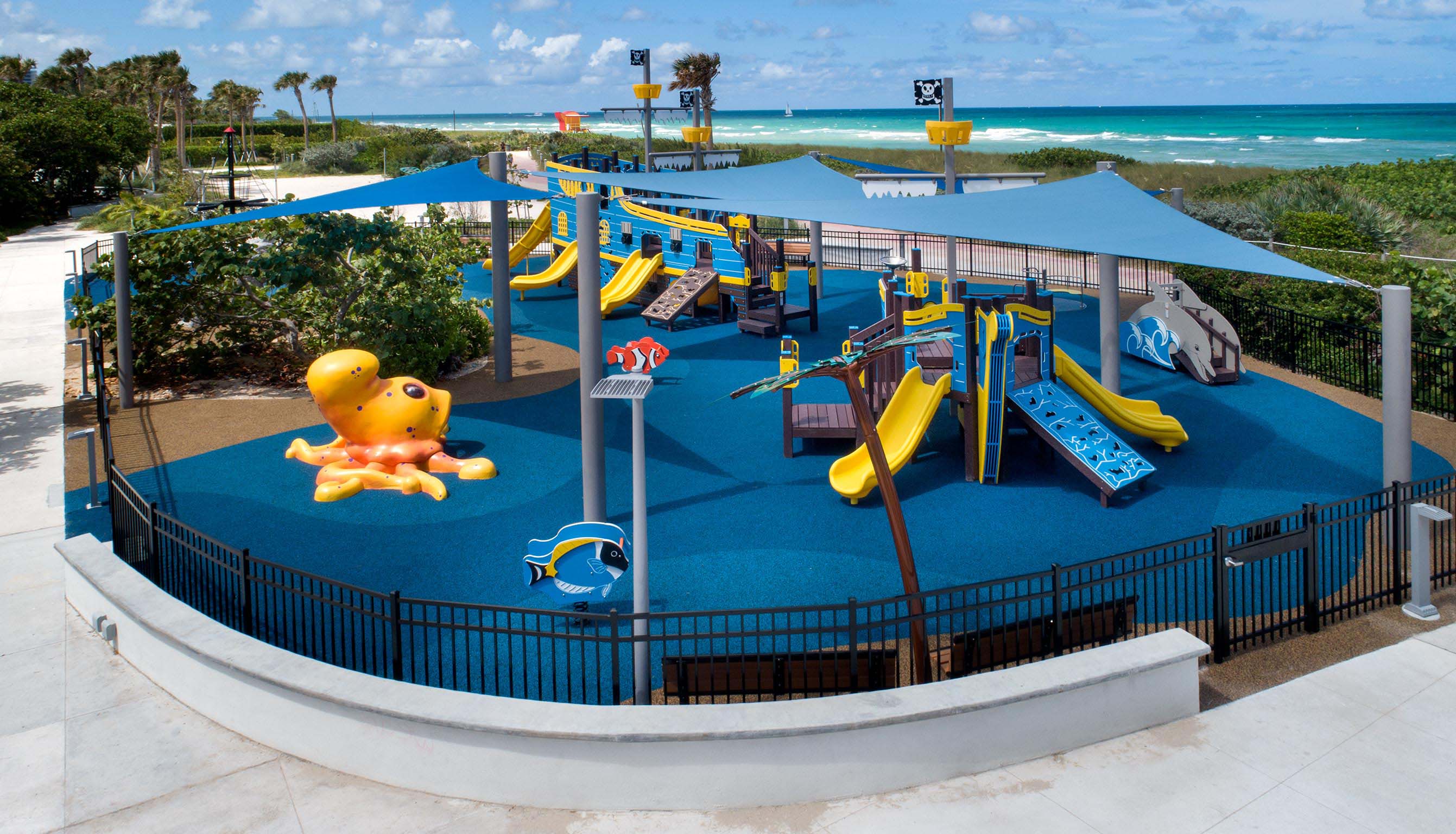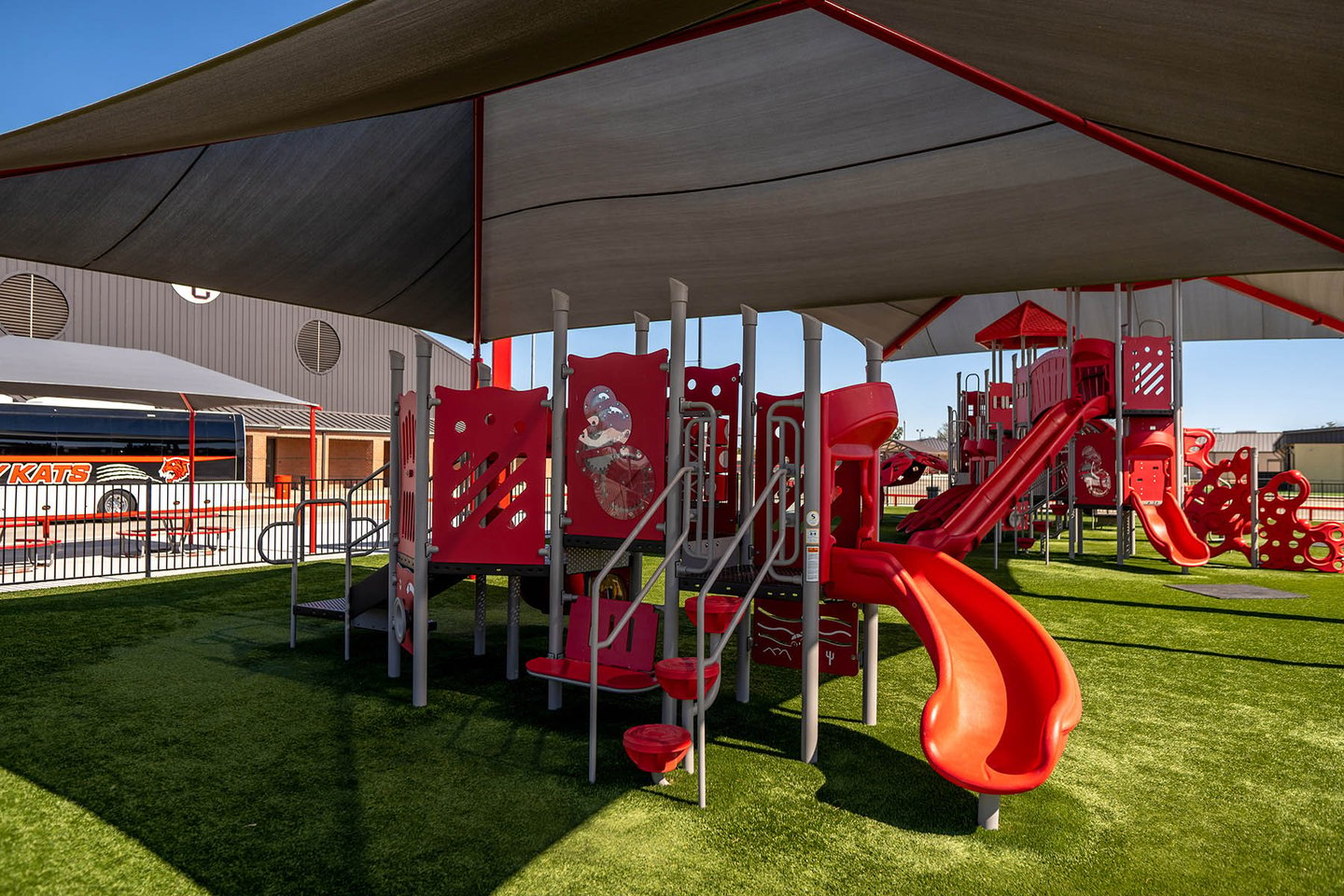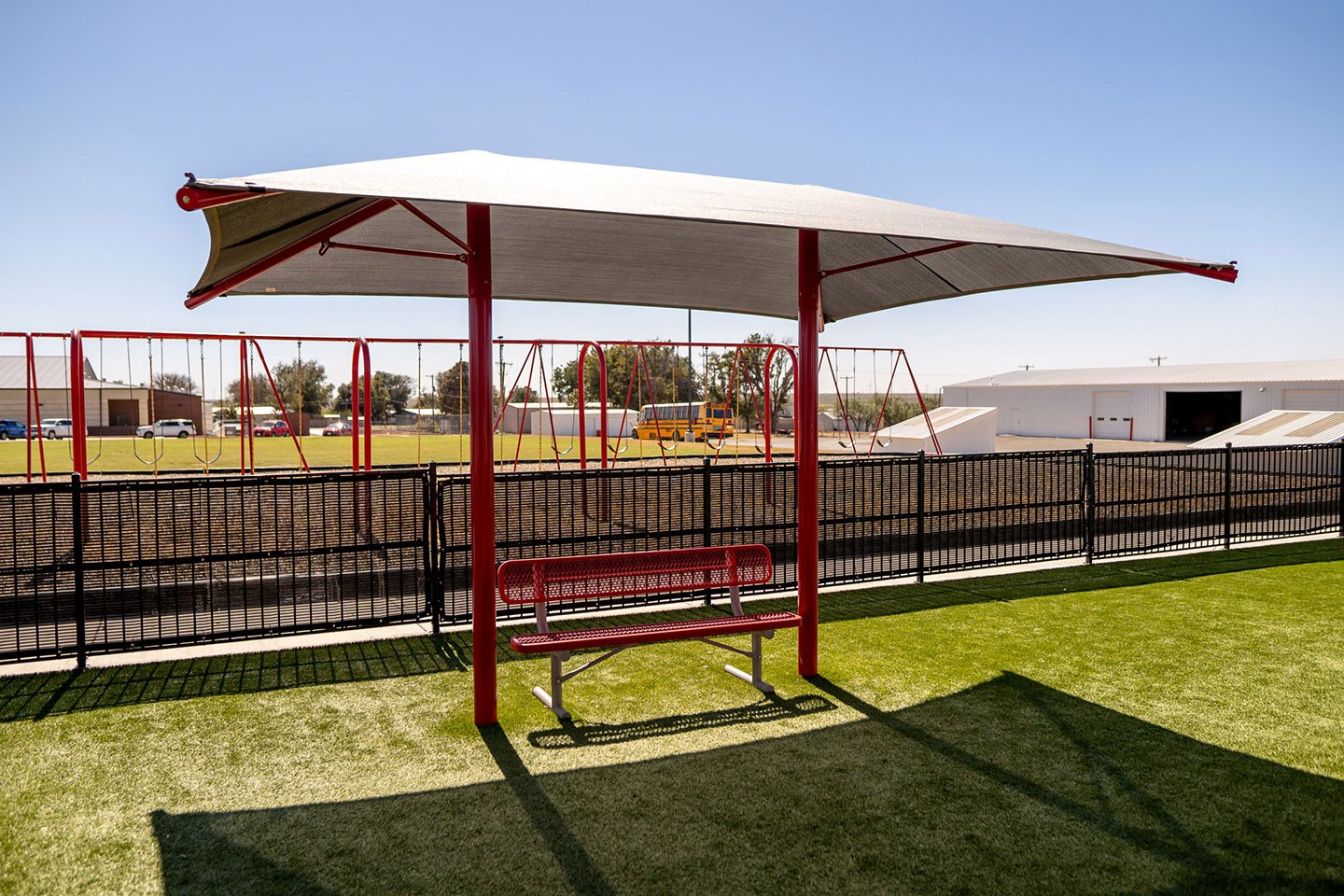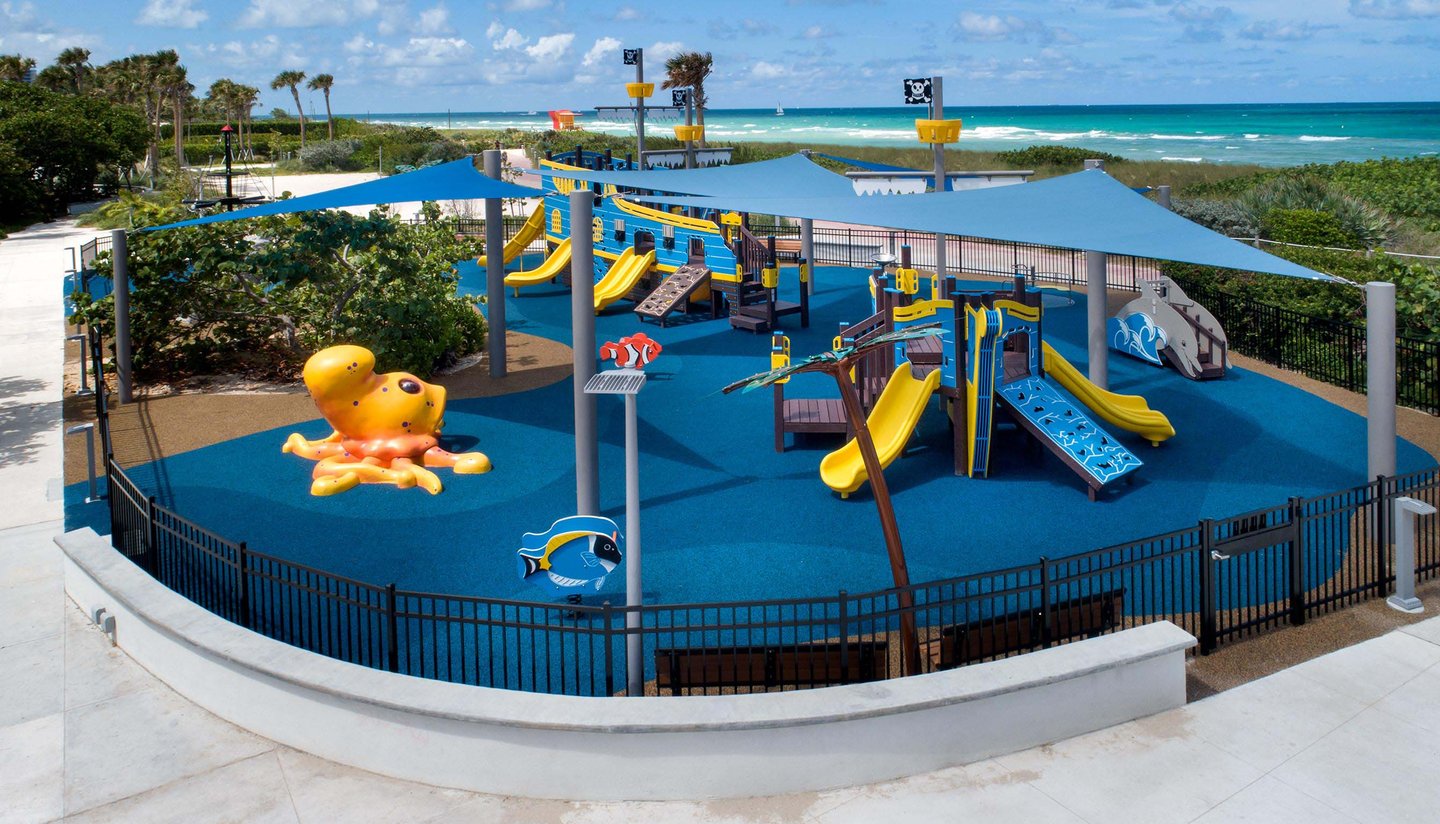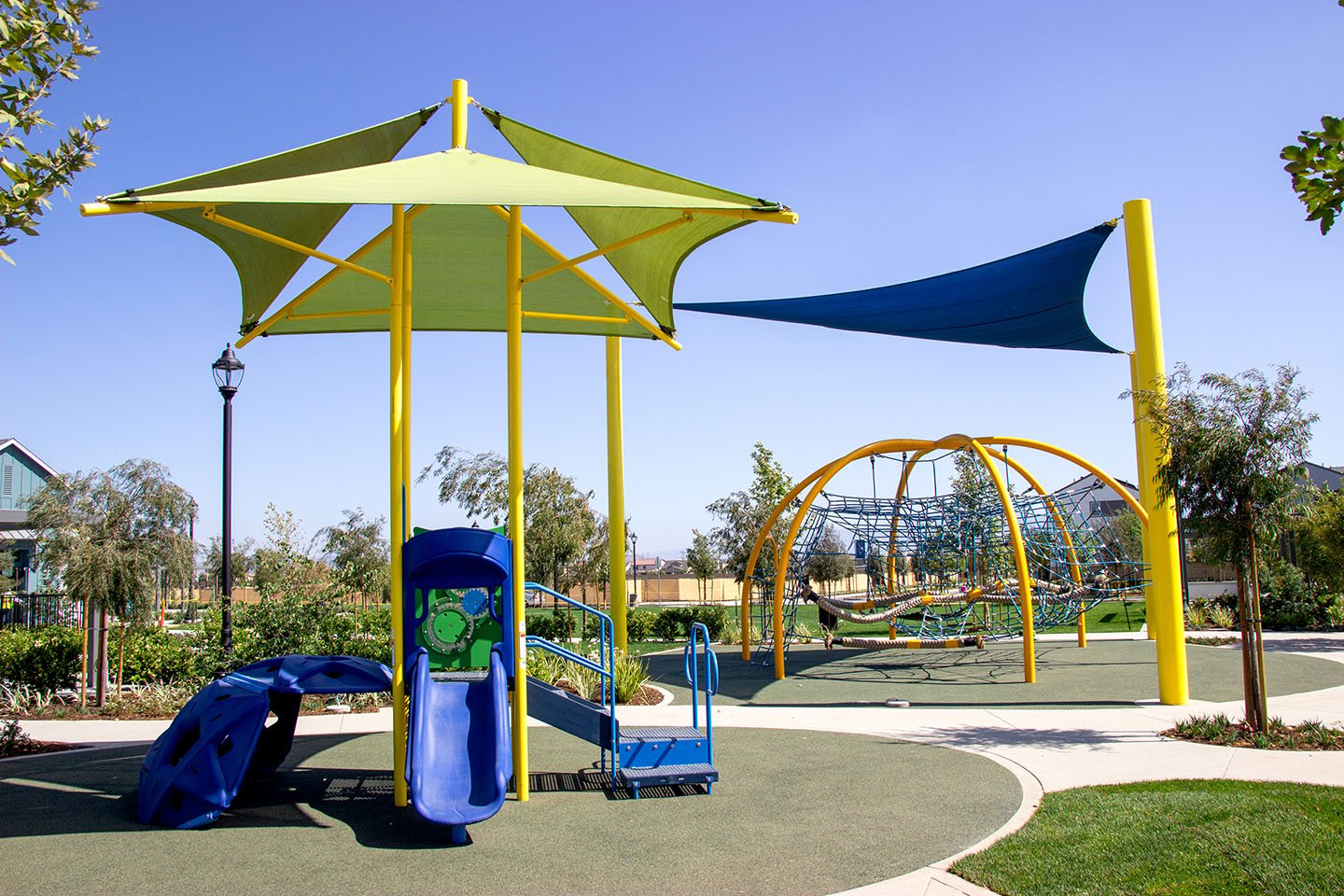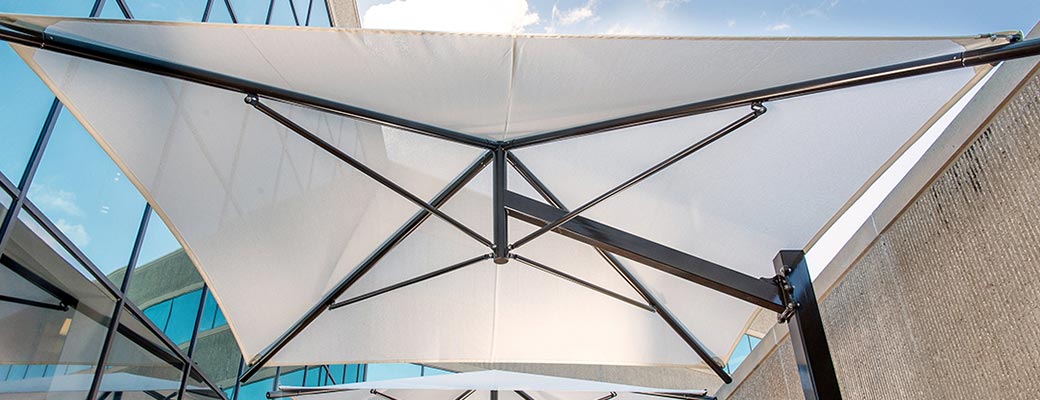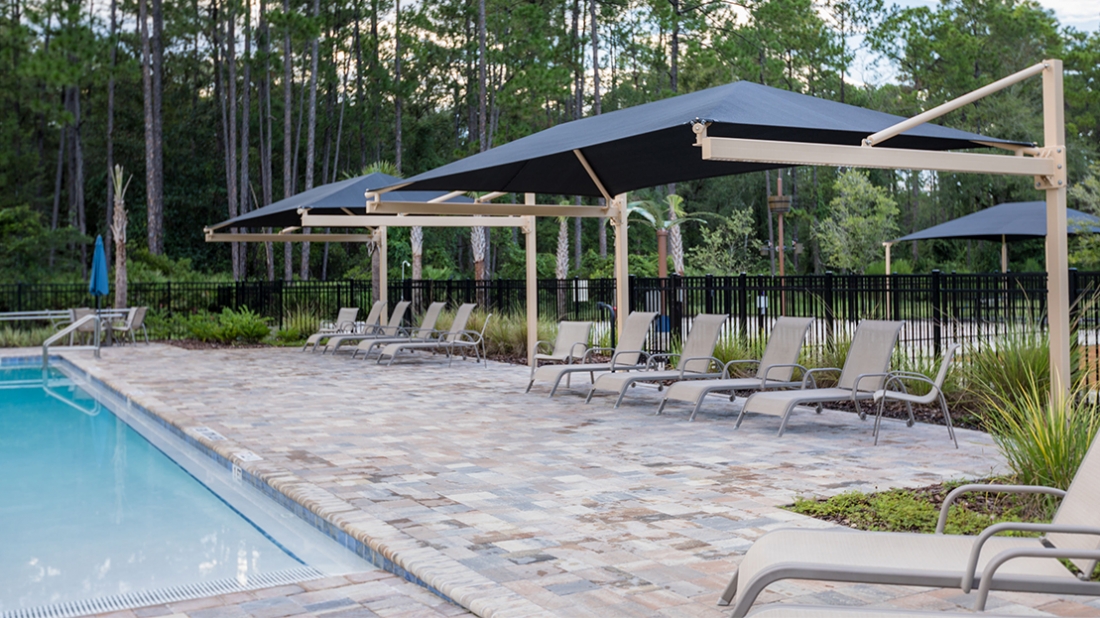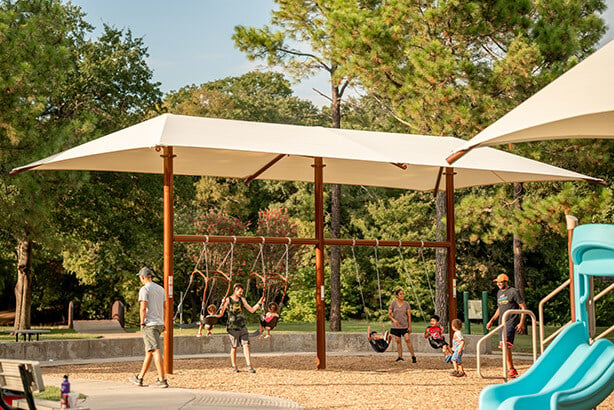With the growing awareness of the risk of skin cancer due to sun exposure, commercial playgrounds are increasingly being designed with a focus on utilizing sun shade, either natural or artificial.
When selecting the site for your future playground, it’s important to consider how your location will be affected by sun exposure. Try to determine if the sun will heat exposed plastic and metal surfaces of the play area during the hottest parts of the day. To alleviate the heat caused by sun exposure, some playgrounds will use existing shade features such as nearby trees to cast shadows onto the playground; however, with this option comes additional maintenance issues such as leaf and limb removal on a seasonal basis. For this reason, many customers choose to utilize a traditional shade structure for shading and protecting their playground.
When selecting a playground shade, it’s important to look at the size of the use zone along with the elevation of your playground. This will ensure your columns do not lie within use zones or fall zones of the playground. In also ensures that your playground canopy is sufficiently elevated above the play equipment as needed. Once the desired shaded space has been defined, it’s time to select what style of shade structure you want over your space. Most playgrounds are covered using either a traditional four-post hip and ridge structure, large independent umbrella style structure, a series of shade sails, or a modular shade structure incorporated directly into the playground.
Hip End Shade
Hip shades represent the most functional and cost-effective option when looking for a playground shade solution that covers an entire playground. The play area canopy has a more traditional look that is also highly functional. The hip end canopy can usually span the entire playground. These shades usually have a max width of approximately 50 feet before the canopy needs to be broken up into multiple domes or canopies.
Umbrellas
Umbrella shade structures can be utilized when trying to add shaded spaces to a large sprawling playground that might incorporate several play areas within the use zone. For example, a playground with a music garden, or dramatic playhouses. It’s important to position the columns outside of the use or fall zones to stay within code when using this option. Playground umbrella shades are not suited to shade a large playground structure as they have a typical max span of about 20 square feet and must be a minimum of 6 feet away from the playground.
Sail Shades
Playground shade sails are a beautiful option for shading playgrounds and allow for creativity and customization when designing your shade structure. They can be configured into overlapping triangular sails for greater depth to the design or can be laid out in swooping hyperbolic square canopies. Shade sails are usually the preferred architectural solution as they lend themselves to the most customization and provide a unique look. The columns themselves aren’t supported by internal framework, so you’ll typically find the column and footing sizes to be large. As a result, the product and installation cost for this option can be higher.
Modular Playground Shade
Lastly, one of the most affordable canopy styles, the modular playground shade is a great option for incorporating shade directly into a new or existing playground structure. These are great in that they don’t require engineering or permitting, and are considerably less expensive to install as they do not require a footing. Their greatest limiting factor is the size of the shade as they max out at around 14 square feet. Take a look at all of our modular playground shade options below.
